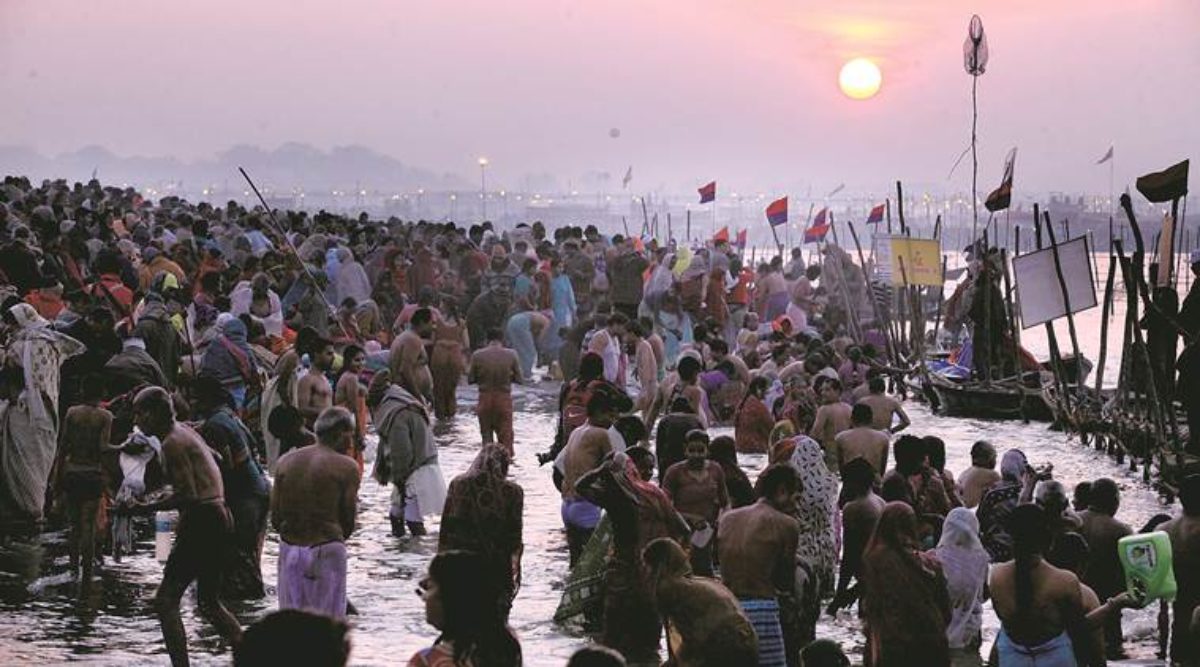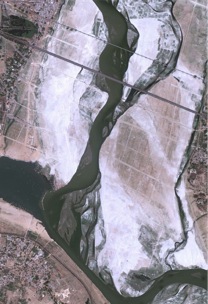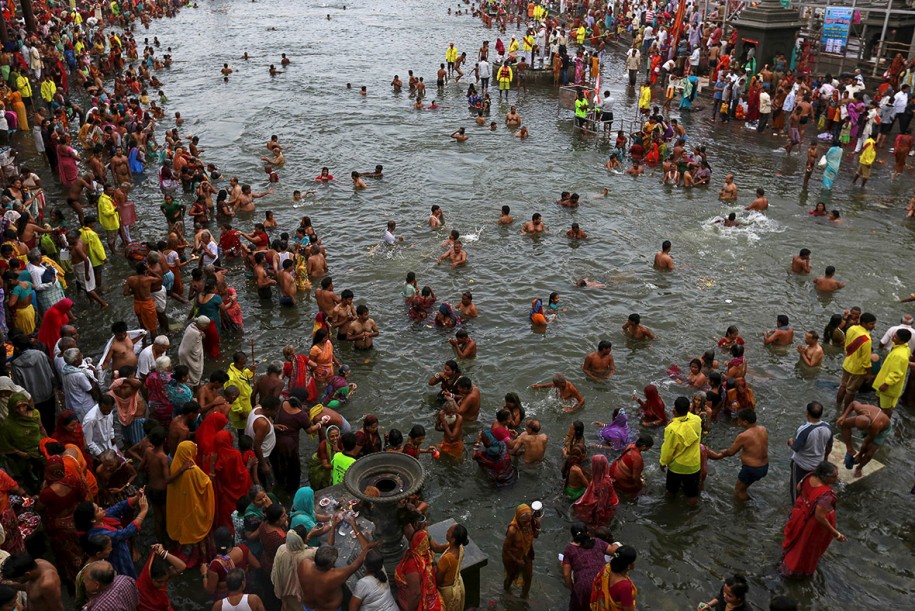Kumbh Mela

A large number of devotees gathered at the bank of Sangam for the second snan of Maha Kumbh in Allahabad in 2013. Photo: Vishal Srivastav
 The Kumbh Mela is a Hindu religious festival that occurs every twelve years at the confluence of the Ganga and Yamuna Rivers in the city of Allahabad. Since its inception early in the first millennium CE, the Kumbh Mela has become the largest public gathering in the world; today it draws tens of millions of pilgrims over the course of a few weeks to bathe in the auspicious rivers. The Mela provides a forum for both individual and collective expressions of faith as pilgrims, religious teachers, and followers of monastic orders converge from all parts of India.
The Kumbh Mela is a Hindu religious festival that occurs every twelve years at the confluence of the Ganga and Yamuna Rivers in the city of Allahabad. Since its inception early in the first millennium CE, the Kumbh Mela has become the largest public gathering in the world; today it draws tens of millions of pilgrims over the course of a few weeks to bathe in the auspicious rivers. The Mela provides a forum for both individual and collective expressions of faith as pilgrims, religious teachers, and followers of monastic orders converge from all parts of India.
The Mela inspires interdisciplinary research in a number of complementary fields. Pilgrimage and religious studies, public health, design, communications, business, and infrastructure engineering converge at this festival, producing a complex atmosphere that can be understood through rigorous documentation and mapping, both on-site and in post-field processing. We consider the Kumbh Mela to be a case study, or prototype, for a concept we would like to call the pop-up mega-city. This spatial model can be extended to situations outside of religious pilgrimage: understanding the spatial, social, and logistical elements of the Kumbh Mela through interdisciplinary research will allow us to propose the deployment of these systems in a variety of places and situations, in particular camps for refugees of war and natural disasters.

The underlying structure of the Mela emerges in the creation of a temporary city to house its many pilgrims. This city is laid out on a grid, constructed and deconstructed within a matter of weeks; within the grid, multiple aspects of contemporary urbanism come to fruition, including spatial zoning, an electricity grid, food and water distribution, physical infrastructure construction, mass vaccinations, public gathering spaces, and nighttime social events. The ultimate goal of the pilgrims is to bathe at the convergence of the rivers: even this act is organized into a larger procession, where pilgrims are given specific times and opportunities to bathe based on their social status. When the festival is not in session, the ground on which the city sits is used for different forms of agriculture.
Visit Mapping the Kumbh Mela at the Harvard University South Asia Institute.